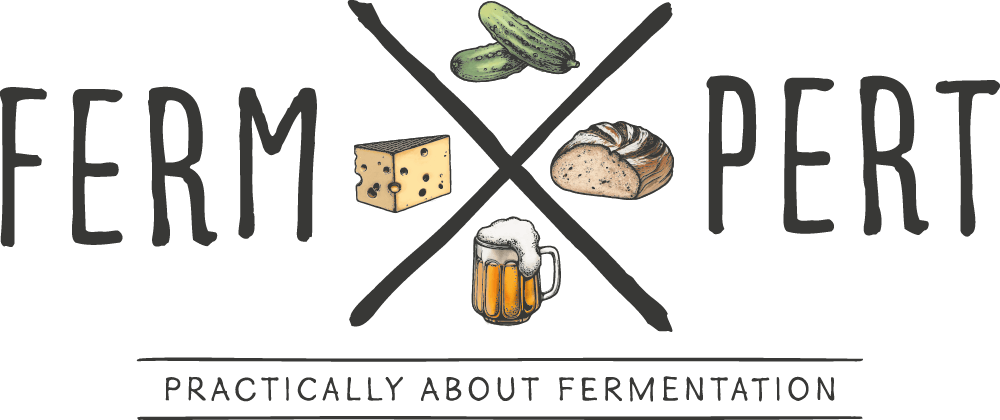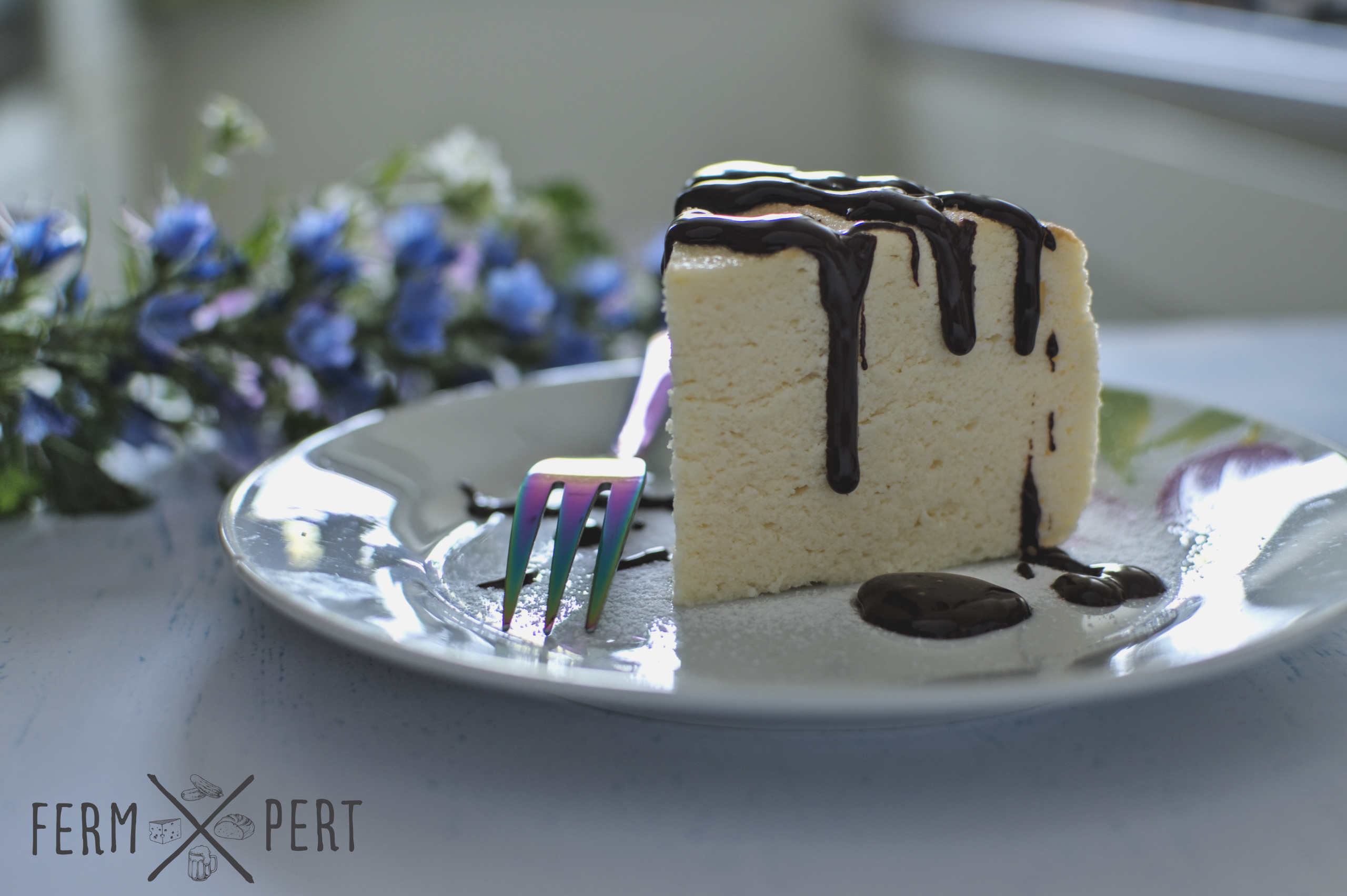Calculating the quark to butter ratio requires a moment of pause. In this post, I present detailed formulae to calculate the fat content od homemade quark and the exact ratios of quark to butter to get a mixture with the perfect fat content.
Calculators
Formulae
The basic question is, how much fat is there in the quark?
To calculate this, I need three values: the fat content of milk used to make quark, as a percentage, the initial mass of the milk and the final mass of the obtained quark (after discarding the whey). The formula is as follows:
fquark = mmilk * fmilk / mquark
where I’ve used the letter m to indicate mass in grams and the letter t to indicate per cent fat content.
Example: I used 2 litres (2000 g) of milk at 3.2% fat content. After squeezing out the whey, I obtained 550 g of quark. I plug in the numbers:
fquark = 2000 g * 3.2 % / 550 g = 11.64 %
So, my quark contains 11.64% fat by weight. In case of store bough quark this is much simpler as the fat content is stated on the packaging. Now comes the complex part: how to calculate the amount of butter an quark that need to be mixed to obtain a given mass at 25% fat content?
Input data:
mtarget = 500 g
fquark = 11.64%
ftarget = 25%
fbutter = 82%
Obviously, the input values have to be modified as needed. The values given are just an example.
The formula to calculate the quark mass is derived from the so called St. Andrew’s rule, also known as Pearson’s square or Pearson’s envelope (a rule often used in chemistry and very frequently in the dairy industry):
mtarget quark = mtarget * (fbutter – ftarget) / (fbutter – fquark) =
500 g * (82% – 25%) / (82% – 11.64%) =
500 g * 57% / 70.36% = 405 g
From here, calculating the mass of butter is a breeze:
mtarget butter = mtarget – mtarget quark =
500 g – 405 g = 95 g
Difficult? Maybe a little. The above calculators should make things easier.

